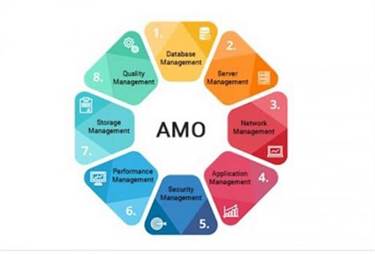On the other hand, non-functional testing is finished to confirm if the product stands as much as customer’s expectations when it comes to quality, reliability usability, efficiency, compatibility, and so on. Risk Register is a spreadsheet which has a listing of recognized risks, potential responses, and root causes. It is used to watch and observe the risks (both threats and opportunities) all through the life of the project. Risk response strategies can be utilized to manage constructive and adverse risks. In this case, the organization is aware of potential risks, but the certainty of their incidence is unsure.
You will study threat analysis in software program testing and all its nuances by the tip of this. Most testers work on a deadline and observe a sequence of check steps to mark a product deployment ready. But among the a quantity of options you’ve, how do you know where to begin the testing process? The most common practice is to work based on different testing approaches—Analytical, model-based, methodical, risk-based testing, and extra. Plan and design the check strategy, schedule, and test cases primarily based on the risk priorities. Create an in depth test plan with assets, instruments, timelines, and types of checks such as performance, functional, security, and so on.

Once the record of potential dangers has been identified, the subsequent step is to analyze them and to filter the danger based mostly on the significance. One of the qualitative threat evaluation method is using Risk Matrix (covered within the next section). This technique is used to determine the likelihood and influence of the chance.
Unlocking Your Future: The Top Sap Business Expertise Platform (btp) Programs Online
This evaluation is finished to deal with components of code and map their interactions. With the help of the map, transaction can be detected and assessed. The map is subjected to structural and architectural pointers to find a way to acknowledge and perceive the primary software program defects. This is definitely the first ever step for a danger primarily based testing strategy to determine any potential dangers whether or not high/medium/low. In this stage you can establish, categorize and kind the risks that pose nice risk and prioritise the risk(s). Using risk-based testing (RBT), groups identify and assess these risks.
Dynamic environments demand high-quality products and absolute buyer satisfaction. Embrace a risk-aware tradition where every group member feels answerable for figuring out and mitigating risks. This encourages proactive threat management and produces a extra robust product.
What Is Risk?
In parallel, correct documentation and monitoring of the danger is important to keep it within management. Continuously check an application’s high-risk areas using dangers as the roadmap in your CI/CD pipeline. This helps preserve software program quality and high-priority risk protection in every sprint. After every dash, reassess the risks and testing objectives based on the changes in scope, surroundings, new options, user suggestions, and so on.
In case there are changes in project scope or exterior factors, reassess and reprioritize the risks simultaneously with the testing course of. Execute the take a look at cases primarily based on the check strategy, beginning with high-risk checks. Monitor the check progress, log defects, and reevaluate the dangers repeatedly. In brief, RBT prioritizes and optimizes testing high-risk areas in a product early to ensure that they work as expected with actual users.
It includes identifying, assessing, and managing potential dangers that may impact the testing and the general project. To handle the risks in software program testing, testers will need to have a risk management plan in place. This plan should include the identification of potential risks https://www.globalcloudteam.com/, their probability, and the impact they may have on the software program product. Once the dangers are identified, they can be prioritized based on their potential impression on the software.

Effort is directed in direction of figuring out the chance (possibility of occurrence) and impact (the type of loss which might end result from the risk) of the detected dangers. Besides these basic levels, you can even concentrate on the communication element while engaged on the danger administration process. Following this structured course of, organizations can proactively address and mitigate potential risks, thereby growing the likelihood of project success. Risk-based testing is crucial for fast, agile, and DevOps environments with tight schedules.
What’s Danger Analysis?
D. This web site may lack security features This risk is taken into account as Medium priority, because it doesn’t have an effect on to the entire project and could presumably be avoided. You can request the development team to examine and add these functions to the net site. If you reply all of the above questions, you will simply determine the potential dangers, which can have an result on to your project. The threat, which was mentioned in above example, is simply one of many potential risks which will occur in your project. You should identify them and make the choice to take care of them ASAP!!!
Risk primarily based testing or Risk Analysis is a vital component of the same. It helps in offering for testing in order to guarantee customer satisfaction from a enterprise perspective. It helps in optimizing QA effort in addition to in meeting time schedule with expected quality. It is always a good idea to concentrate on identifying defects early somewhat than later as it permits time to repair them sooner.
Then, they follow a testing course of to make sure the most important dangers are examined early within the growth cycle in order that they are finally prevented in production. If you have no risk types in software testing idea why and what you may be testing, dangers await forward. For a software product, the danger is defect slippage affecting the product high quality. Risk Based Testing (RBT) is a software program testing sort which is based on the probability of risk.
- Therefore the steps above are quite useful to be within your testing technique.
- Forbes predicts that by 2025, round 33 million U.S. employees shall be doing some type of distant work.
- For the success of your project, Risk must be recognized and corresponding solutions must be decided earlier than the start of the project.
- Effort is directed towards figuring out the chance (possibility of occurrence) and impact (the kind of loss which could result from the risk) of the detected dangers.
- Risk in software program testing means an element or an motion that may produce undesirable outcomes.
So then, you prioritize their testing to mitigate or avoid the risk of their failure in production. Test end result measurement based on danger helps the group to know the residual stage of quality threat during take a look at execution, and to make sensible launch choices. The threat proprietor is answerable for identifying choices to reduce the chance and impression of the assigned dangers. Risk in software program testing means an element or an motion that might produce undesirable outcomes. It is one thing yet to return to mild (or may by no means become visible) however could make the system fragile and susceptible to failure or defects.
It entails assessing the chance based on software program complexity, criticality of business, frequency of use, potential areas with Defect and so on. Risk primarily based testing prioritizes testing of options and functions of the software utility that are more impactful and more likely to have defects. Given the disadvantages which could accrue from the failure to provide for threat administration, it turns into crucial to make room for a similar.
During the project estimation, conduct a optimistic evaluation, with out together with the detected risks. It is the method of making an in depth situation on how this or that issue can occur, underneath what circumstances, by following which steps, and so forth. Metrics symbolize combined measurements, evaluating software program processes, projects, and merchandise. Data risks, things corresponding to how correct the data is, how a lot knowledge there is, the information varieties, consistency, information creation/updates/deletion, error handling.
Risks arising from technical challenges or limitations within the software program development process. It is clear that Risk Management in Testing isn’t an optionally available side of the Software Development Life Cycle. Risk Management in Software Testing, has immense advantages and this is predominantly in the type of delivering products that are in a position to make sure buyer satisfaction in the absolute best manner. Low-Medium-High values are assigned to the chance and impact of every of the risks.






